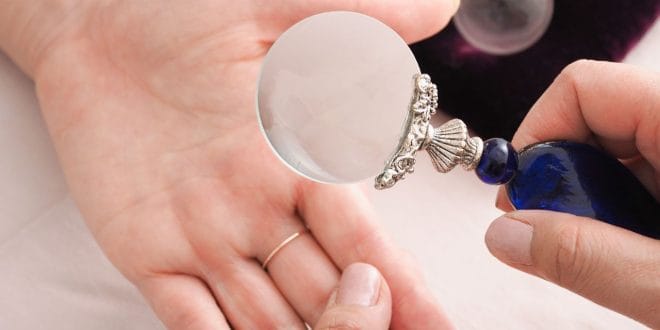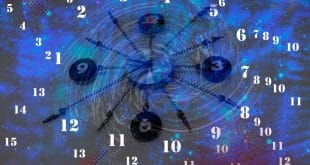Palmistry, also known as chiromancy or hand reading, has been practiced for thousands of years across different cultures. It’s believed that the lines, mounts, and shapes of your hands hold clues about your personality, life path, and future. However, like many other spiritual practices, palmistry is often met with skepticism. The question arises: Is palmistry an art, a science, or something in between?
In this article, we’ll explore the history, arguments for and against scientific validity, and psychological perspectives to understand where palmistry stands in the ongoing debate between science and spirituality.
A Brief History of Palmistry
Palmistry has its origins in ancient civilizations, including India, China, Egypt, and Greece. Over time, it became intertwined with various philosophical and spiritual systems.
- In ancient India, palmistry was part of Jyotish Shastra (Vedic astrology), where it was used to predict life events.
- The Greek philosopher Aristotle wrote about palmistry, and Hippocrates, the father of modern medicine, is said to have used hand analysis to diagnose health conditions.
- In Renaissance Europe, palmistry was studied alongside astrology and alchemy by scholars interested in understanding human nature.
Despite its long history, modern science has largely dismissed palmistry as pseudoscience due to a lack of empirical evidence.
Palmistry as an Art: The Intuitive Approach
Many practitioners view palmistry as an intuitive art rather than a scientific discipline. Here’s why:
- Symbolism and Interpretation:
Palmistry relies heavily on symbols—such as lines, mounts, and markings—and their interpretations can vary based on cultural traditions and the intuition of the reader. - Personalized Readings:
Unlike scientific studies that seek general truths, palmistry readings are often tailored to the individual. A skilled palmist may consider not just the lines on the hand but also energy, body language, and personal experiences. - Subjective Experience:
Many people report that palmistry readings resonate with their life experiences, even if they cannot be scientifically proven. This suggests that palmistry may offer psychological benefits, such as self-reflection and personal insight.
Is There a Scientific Basis for Palmistry?
While palmistry itself is not recognized as a science, there are some scientific concepts that indirectly support certain aspects of hand analysis. Let’s explore these areas.
1. Dermatoglyphics (Study of Fingerprints and Skin Patterns)
Dermatoglyphics is the scientific study of fingerprints and skin ridges, and it has been used in medical research to identify genetic and developmental conditions.
- Studies have shown that certain fingerprint patterns can be linked to conditions like Down syndrome, autism, and schizophrenia.
- Finger length ratios (such as the 2D:4D ratio between the index and ring fingers) have been associated with traits like hormonal exposure, athletic ability, and even career preferences.
Connection to Palmistry:
Palmists often examine finger shapes, skin texture, and lines to draw conclusions about a person’s health and personality. While dermatoglyphics focuses on measurable patterns, it parallels the palmistry tradition of reading hands for deeper insights.
2. Hand-Body Connection and Reflexology
In reflexology, practitioners believe that different areas of the hand correspond to various organs and systems in the body. Similarly, traditional Chinese medicine links the hands to overall health and energy flow.
- Reflexologists may use hand pressure points to relieve stress or improve circulation.
- Palmistry also emphasizes that changes in the life line or health line may reflect shifts in physical vitality.
Scientific Perspective:
While reflexology has limited scientific backing, research suggests that hand exercises and stimulation can promote nerve function and stress relief, supporting the idea that the hands are connected to the nervous system and well-being.
3. Psychological Insights: The Barnum Effect
One reason why palmistry often feels accurate is due to the Barnum effect—a psychological phenomenon where people find vague, general statements personally meaningful.
- For example, a statement like “You are independent but sometimes feel uncertain about your future” could apply to many people.
- In palmistry, broad interpretations of lines (e.g., “Your fate line suggests career changes”) may resonate with individuals due to the power of suggestion.
However, this doesn’t mean palmistry is entirely without merit. Some practitioners argue that palm readings encourage self-reflection and help clients identify hidden strengths or patterns of behavior.
Arguments Against Scientific Validity
Despite the psychological and symbolic value of palmistry, critics argue that it lacks the key elements of scientific inquiry:
- No Empirical Evidence:
Scientific studies have not found consistent correlations between palm lines and life outcomes. Without reproducible evidence, palmistry cannot be classified as a science. - Subjectivity and Bias:
The interpretation of palm lines varies between palmists, leading to inconsistent results. Personal beliefs and biases may also influence readings. - Cultural Differences:
Different traditions (e.g., Indian vs. Western palmistry) assign different meanings to the same features, further complicating efforts to validate palmistry scientifically.
Palmistry as a Tool for Self-Discovery
Even without scientific validation, many people find palmistry helpful for personal growth. Here’s why:
- Reflection and Awareness:
A palm reading can prompt you to think about your goals, relationships, and life direction. By reflecting on the meanings of your lines, you may gain new perspectives on your challenges and opportunities. - Encouraging Action:
Positive interpretations—such as a strong fate line suggesting career success—can motivate individuals to pursue their ambitions with greater confidence. - Connecting with Others:
Palmistry, like tarot or astrology, can serve as a conversation starter and help people connect over shared experiences and insights.
How to Approach Palmistry with an Open Mind
If you’re curious about palmistry but also value scientific thinking, here’s how you can approach it with balance:
- View It as a Symbolic Art:
Understand that palmistry is more about symbolism and intuition than hard science. Use it as a tool for self-reflection rather than a strict predictor of future events. - Combine It with Other Practices:
You can enhance your understanding by integrating palmistry with psychology, tarot, or astrology. These complementary practices offer different perspectives on your strengths and challenges. - Focus on Personal Growth:
Rather than seeking absolute truths, use palmistry to explore areas where you can grow or change. Pay attention to recurring themes that might offer valuable life lessons.
The debate over whether palmistry is a science or art is unlikely to be resolved anytime soon. While it may not meet the criteria of scientific validity, palmistry offers symbolic and psychological insights that many people find meaningful. Whether you approach it as a skeptic or a believer, the key is to stay curious and open to the possibilities of self-discovery.
Have you ever had a palm reading that resonated with your life? Share your thoughts and experiences in the comments below!
 Lifeved
Lifeved





 by
by